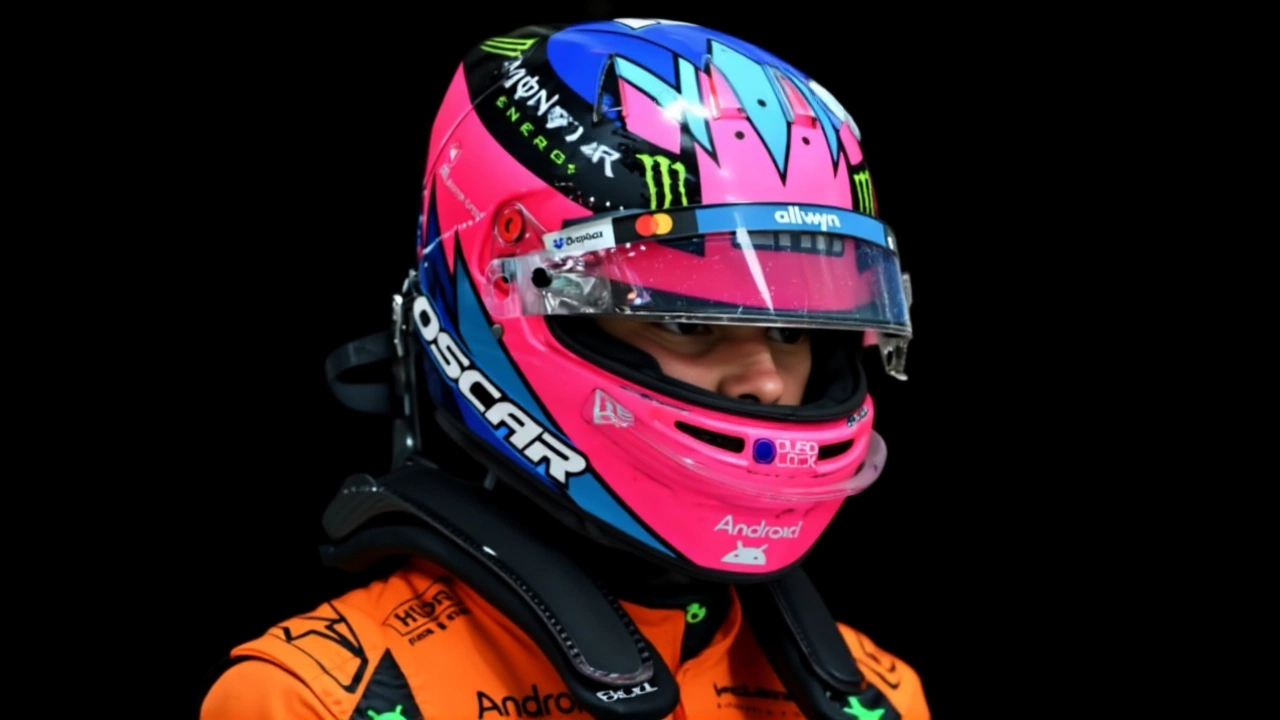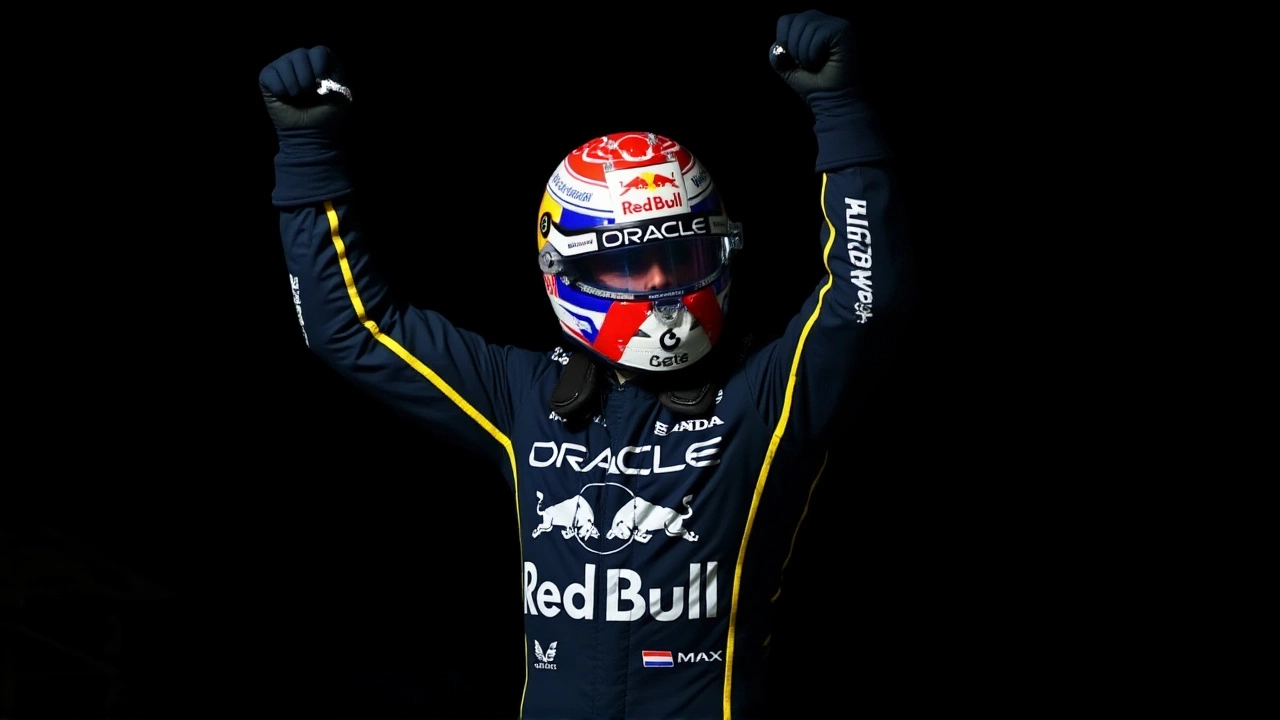Max Verstappen didn’t just win the 2025 Las Vegas Grand Prix—he rewrote the script. On Saturday, November 22, 2025, the 27-year-old Dutch driver for Red Bull Racing crossed the line at the Las Vegas Strip Circuit in Paradise, Nevada, a staggering 20.741 seconds ahead of the field. That’s the largest winning margin in the race’s short history. But the real drama? It came after the checkered flag. Lando Norris, the 25-year-old British driver for McLaren Formula 1 Team, and his teammate Oscar Piastri, 23, were disqualified for a technical infringement, instantly turning a McLaren celebration into a championship earthquake.
The Race That Changed Everything
It started with Norris on pole, the favorite to clinch his first world title. He led the opening laps, but Verstappen—cool, calculated, relentless—swept past him in Turn 1 after Norris ran wide under braking. By Lap 25, Verstappen had pitted and rejoined 1.2 seconds ahead of George Russell, who was driving a gritty, damaged Mercedes-AMG Petronas Formula One Team car after a steering issue that plagued him since qualifying. Russell, 26, held second for a while, but Norris overtook him on Lap 34. The tension was thick. Russell radioed his team: “I’d rather take P3 than risk a battle I can’t win.”
Verstappen, meanwhile, didn’t flinch. He switched to Hard tires at the halfway point and slowly stretched the gap. Norris, forced into fuel-saving mode in the final laps, couldn’t respond. Verstappen even set the fastest lap on the final tour—his 69th career victory. It was textbook dominance. But the celebration was cut short.
The Disqualification That Shook F1
Hours after the race, the FIA announced both McLaren cars had violated technical regulations. The exact nature? Still undisclosed. No official statement cited aerodynamic loopholes, illegal weight distribution, or software anomalies. Just: “Post-race inspection found non-compliance.” Firstpost and Sport Bible confirmed the disqualification, and YouTube channels like ‘Max WINS in LAS VEGAS GRAND PRIX’ quickly circulated the fallout: Russell moved to second, Alpine’s Esteban Ocon to third. The podium was remade overnight.
Before the penalty, Norris had 408 points, Piastri 378, and Verstappen 366—42 behind. Now? Verstappen leads the standings by 18 points over Norris, with Piastri at 378 but ineligible for championship points after DQ. The math is brutal: Norris needs to outscore Verstappen by 18 points over two races to win the title. Verstappen, meanwhile, just went from “slim chance” to “serious threat,” as Red Bull Racing admitted in their post-race analysis.
Championship Implications: A Two-Horse Race
The title fight is now a head-to-head between Verstappen and Norris. Two races remain: Qatar on December 6 and Abu Dhabi on December 13. Verstappen has won six races this season. Norris has five. But Norris’s consistency—five podiums in a row before Vegas—has been shattered. Now, every point matters. A single DNF or mechanical failure could end his title hopes.
McLaren’s internal tension is palpable. Team principal Andrea Stella reportedly told reporters, “We’re reviewing every component of the car. We’re not making excuses.” Piastri, who had been quietly closing in on Norris in the standings, is now out of title contention entirely. His fourth-place finish was erased. His season? Reduced to a footnote.

The Bigger Picture: Red Bull’s Milestone
Verstappen’s win wasn’t just about points. It was his 125th career podium in 231 starts. His eighth in the U.S.—four in Austin, two in Miami, now two in Vegas. And it came during the 150th Grand Prix for the Red Bull-Honda partnership. That’s legacy-building. He’s now tied with Lewis Hamilton for most wins in the 21st century. Only Michael Schumacher has more consecutive titles. Verstappen, at 27, is closing in on history.
Elsewhere, Charles Leclerc charged from ninth to sixth in his Ferrari, while Lewis Hamilton, starting last after a penalty, clawed back to tenth. But the story wasn’t about the underdogs—it was about the collapse of a favorite.
What’s Next? Two Races, One Title
Qatar’s tight, technical layout favors McLaren’s car, but Verstappen’s pace is undeniable. Abu Dhabi’s long straights suit Red Bull. If Norris wins both, he takes the title. If Verstappen wins one and Norris falters? The Dutchman becomes the first driver since Sebastian Vettel (2010–2013) to win four straight titles—and the first ever to win five.
McLaren’s engineers are now under a microscope. The FIA’s silence on the infringement has fueled speculation: Was it a rear diffuser? A flexing bodywork component? A software glitch? Until they speak, the shadow of doubt lingers.

Legacy in the Balance
This isn’t just a race result. It’s a turning point. Norris, once on the cusp of glory, now fights to salvage his reputation. Verstappen, the cool assassin, now has the momentum. And Red Bull? They’re one step closer to rewriting the record books.
Frequently Asked Questions
Why were Norris and Piastri disqualified?
The FIA has not publicly disclosed the exact technical violation, but sources suggest it involved an aerodynamic component that exceeded permissible flexibility limits under load. Similar penalties were issued to Red Bull in 2023 over rear wing flexing, and to Ferrari in 2022 over bargeboard design. McLaren’s car passed pre-race checks but failed post-race inspections, indicating the issue may only manifest under race conditions.
How does this affect the Drivers’ Championship?
Before disqualification, Norris led Verstappen by 42 points. After, Verstappen leads Norris by 18 points, with Piastri ineligible. With only Qatar and Abu Dhabi remaining, Norris must outscore Verstappen by at least 19 points across both races to win the title. Verstappen only needs to finish ahead of Norris in one race to clinch his fifth consecutive championship.
Can Verstappen still win the title if he doesn’t win both remaining races?
Yes. If Verstappen finishes second in Qatar and Norris finishes fourth or lower, Verstappen wins the title. He only needs 19 more points than Norris over the final two races. Even a 10-point gap in Qatar followed by a 10-point lead in Abu Dhabi would be enough. The pressure is now entirely on Norris to perform perfectly.
What does this mean for McLaren’s 2026 season?
McLaren’s credibility is under fire. Losing two podiums due to a technical breach raises questions about their design philosophy and compliance protocols. If the FIA finds a systemic issue, they could face fines or even a points deduction in 2026. Their 2025 car, once praised for its downforce, may now be seen as borderline illegal—damaging their reputation with sponsors and fans.
Is this the most dramatic F1 title turnaround in history?
It’s among the most dramatic. In 1986, Nigel Mansell lost the title after a fuel pump failure in the final race. In 2008, Lewis Hamilton won by one point after a controversial safety car. But no recent title battle has flipped so abruptly due to post-race penalties. The closest parallel is the 2021 Abu Dhabi controversy—but that was about race control, not technical rules. This is pure regulation enforcement changing history.
What’s next for the FIA and McLaren?
The FIA is expected to release a technical bulletin clarifying the violated regulation by December 1. McLaren will likely appeal the disqualification, but precedent suggests appeals rarely succeed without new evidence. Meanwhile, the FIA may tighten scrutineering protocols for the final two races, possibly introducing random component testing mid-race weekend to prevent similar surprises.

